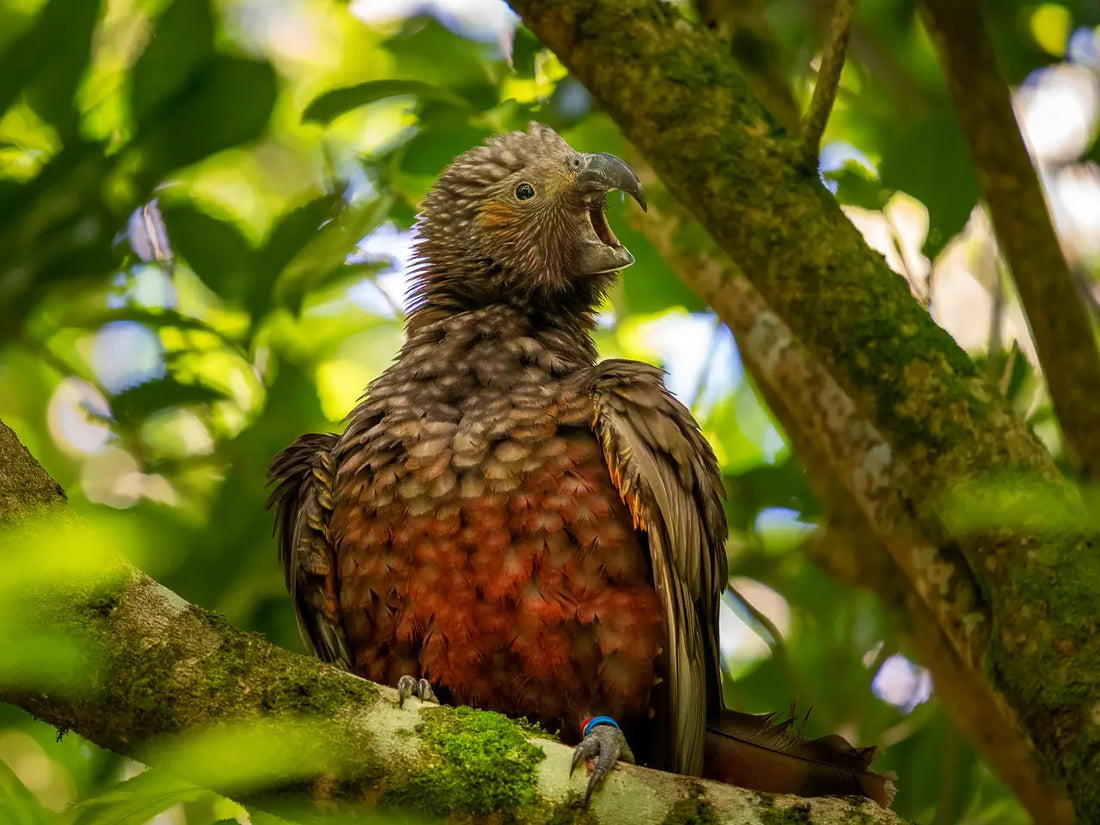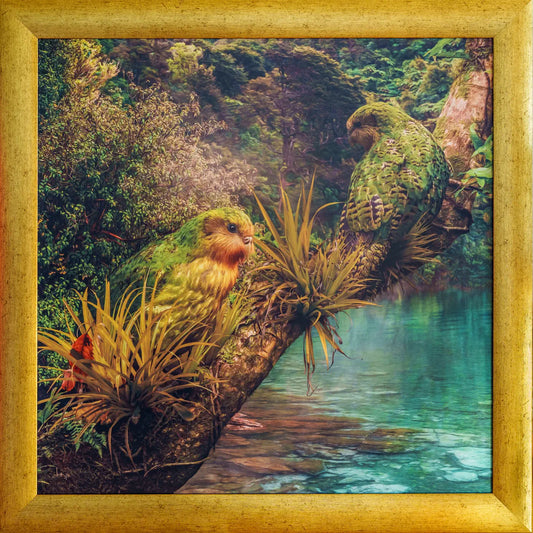
The new kākā kid on the block
Share
It's that time of the year when the Zealandia valley fills with the sounds of "Mum, mum, mum, mum" as newly fledged kākā chicks are weaned and taught how to fend for themselves. On a late afternoon walk yesterday, I heard those unmistakable cries near the Top Dam kākā feeders, and after a bit of hunting found the culprit high up a tree being tended by her Mum. It was none other than RB-M - the very first chick we banded this season and the first fledgling I've seen out of the nest this season. You might remember her from this story...
RB-M's mum is the lovely V-YW. She's about ten years old now (lordy how time flies!) and unusually became a mother at a very young age - at just one year old. She's onto at least her second fella though, this time an unbanded chap of unknown parentage.
Despite having fledged over six weeks ago, RB-M is still quite clumsy and gravity is not her friend. Kākā cannot fly when they fledge - it can take them a couple of weeks to get the hang of it and even longer to get proficient. Thank goodness we have the Zealandia fence to keep predators out and give these fledgling a good start in life!
A perfect way to end a lovely summer afternoon at Zealandia!
In the coming days and weeks, do keep an eye and ear out for these hilarious characters. If they have a large purple cohort band, you'll know it's a youngster. There are also unbanded fledglings out there too, and it can be hard at a glance to differentiate them from their mothers. The mothers also have yellow eye rings and will beg for food too. The chicks, however, appear much more gormless and naive, and their feathers are usually fresher too.
In the coming days and weeks, do keep an eye and ear out for these hilarious characters. If they have a large purple cohort band, you'll know it's a youngster. There are also unbanded fledglings out there too, and it can be hard at a glance to differentiate them from their mothers. The mothers also have yellow eye rings and will beg for food too. The chicks, however, appear much more gormless and naive, and their feathers are usually fresher too.








2 comments
Rawe! What an excellent photo essay.
I`ve been puzzled by unusual calls mostly at night and haven`t been able to identify these high-pitched, breathy calls. Yesterday morning about 5:45am, there was a huge thump on a nearby window! When I went to investigate, I couldn`t see anything through any window. Then I walked around the house and lying there on the grass was a stunned juvenile kākā with wings spread wide. It gathered itself together, squwarked and skimmed clumsily into some shrubs. I kept out of sight and kept my curious cat inside. Later I checked and it had flown away. I couldn`t see any bands. Maybe those strange calls were for Mum and that young kākā was still learning gravity too? Perhaps once the sun rose and shone on that window, it saw its reflection and thought to join it?
I was so worried about it, but it didn`t look injured – just stunned. Its feathers certainly looked fresh like in your marvellous photos.
FYI: sales of your art is doing Really well according to Bridget at Zealandia.
Kia ora for your kind contribution to Zealandia,
Rosemary